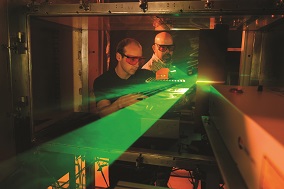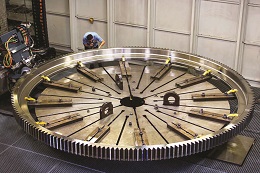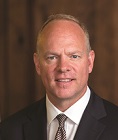

Industry leaders, though, are increasingly drawn to Wyoming’s burgeoning New West economy built on sound business principles.
Wyoming consistently receives high marks for state management and deep financial reserves, which, in turn, provide business owners a reliable, collaborative environment.
The Wyoming Legislature is statutorily required to maintain a balanced budget and the state has an approximately $16 billion in savings. Solidly in the black, Wyoming is able to invest in education, workforce and infrastructure critical to public and private business needs.
Wyoming government’s polished business practices spill over to its favorable business climate. Wyoming features no personal or corporate state income tax, a stable regulatory policy and a low cost of doing business.
Wyoming’s open-door access to legislators and the Governor is especially attractive to startup companies in highly regulated industries. This access, coupled with numerous grant, loan and incentive programs, provide business with key financial assistance.
Value-Added Mindset
Wyoming Governor Matt Mead has focused on exploring innovative ways to add value to the state’s raw materials since his first-term election in 2010.
Through partnerships typical for Wyoming, researchers, the governor, legislators and industries work together to advance new technologies.
The Integrated Test Center at Basin Electric’s Dry Fork Station coal-fired power plant north of Gillette will provide a lab for carbon-capture research. In October 2015, Mead announced the selection of the location and the $15 million in state seed money to get the public-private effort up and running. Research teams will study opportunities to turn carbon dioxide emissions into products like graphene, a recently discovered substance many times stronger than steel.
The University of Wyoming’s (UW) $115 million Tier 1 Engineering Initiative, launched in 2012, is designed to lead the state’s only four-year public institution to the national forefront in education and research. The Tier 1 reach includes the university’s Science and Education initiatives. It touches on fields like clean coal and high-performance computational science and engineering.

The initiative encourages industry partnerships like the Hess Corporation, which has invested $25 million in the School of Energy Resources since 2013.
Wyoming isn’t just investing in bricks, mortar and technology. In 2005, the Wyoming Legislature created the Hathaway Scholarship program for qualified Wyoming high school graduates. The initial $400 million endowment funds scholarships to attend the university and any of the state’s eight community colleges.
Technology Center of the High Plains
Wyoming is advancing plans to make technology the state’s fourth-largest economic driver behind energy, tourism and agriculture.
The state’s efforts to meet the tech industry’s needs are showing results and gaining attention. The Kauffman Index ranked Wyoming No. 2 for new business startup activity (2015).
The $15.8 million, 100-gigabit, statewide Wyoming Unified Network is a public-private effort to enhance educational opportunities, improve tele-health services, promote business growth and bring connections to rural communities that otherwise wouldn’t warrant investment.
Schools have experienced a 40-fold increase in broadband capacity.
Private broadband providers have the opportunity to connect Wyoming businesses with gigabyte service.
In 2012, Microsoft began developing data centers west of Cheyenne. The corporation has now invested nearly three-quarters of a billion dollars in Wyoming.
Underwriters Laboratories (UL) expanded to Laramie in 2014. The office houses UL’s technology development and support services for enterprise applications and global clients in the technology sector. UL currently is in the Wyoming Technology Business Center incubator on the UW campus until a new building partially funded by the Wyoming Business Council, the state’s economic development agency, is complete. The building will be in the new Cirrus Sky Technology Park, which also received Business Council funding.
Mead also spearheads efforts to boost Wyoming’s tech-ready image through the Global Technology Summit, which features some of the nation’s most cutting-edge executives and thinkers, and the Wyoming Governor’s Broadband Summit.
You Can Make it in Wyoming
Wyoming is in a prime location for manufacturers. Three interstate highways; two Class I railroads and major international airports in Billings, Montana; Denver, Colorado, and Salt Lake City, Utah, provide reliable access to and from Wyoming communities statewide.
Wyoming manufacturing employment increased 13.5 percent between December 2009 and March 2014. Some of that can be attributed to Wyoming exports nearly doubling from 2010-14 ($983 million to $1.8 billion).

-
Tungsten Heavy Powder & Parts announced in August 2015 its China-based production operation will move to Laramie. The plant will produce tungsten fragments and penetrators to be sold globally to military weapons and armament manufacturers.
-
Former Colorado firearms accessories manufacturing companies HiViz Shooting Systems and Magpul Industries relocated to Laramie and Cheyenne, respectively, since 2013.
-
Cheyenne-based Wasatch Railcar Repair Contractors in October 2015 celebrated the opening of its restoration and repair plant in Shoshoni. The branch is expected to employ 50 to 75 people working three shifts in the central Wyoming town of 650. Company founder John Rimmasch credited the plant’s opening to the Wyoming Legislature renewing the state’s rolling stock tax exemption last winter. The exemption applies to sales of property or services performed for the repair, assembly, alteration or improvement of railcars.
The Wasatch Railcar announcement parallels improvements to Wyoming’s rail transportation infrastructure. Prior to 2004, Shoshoni and Evanston were home to the two rail parks in Wyoming. Since then, Business Council grant money has helped build parks in Cheyenne, Casper and Upton. Several others have been approved and are in development.
Meanwhile, Wyoming’s energy industry continues to diversify its portfolio. Large energy projects on the horizon include:
-
The 1,000-turbine Chokecherry and Sierra Madre Wind Energy Project in south-central Wyoming. It will be the largest wind farm in the U.S.
-
The TransWest Express transmission line from south-central Wyoming to southern Nevada.

